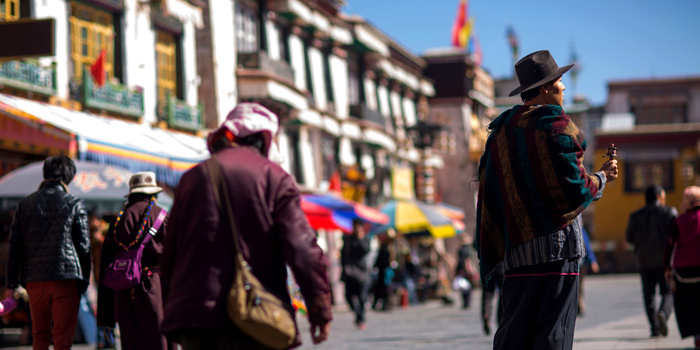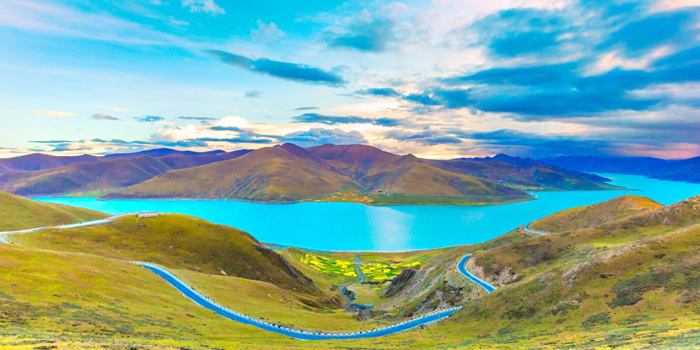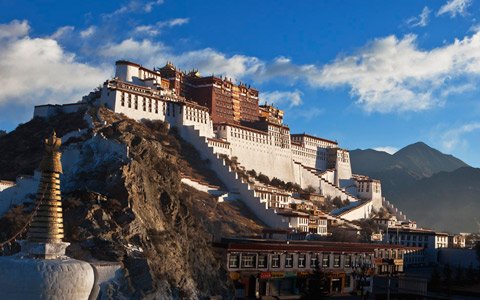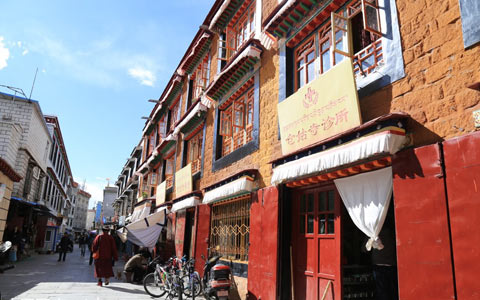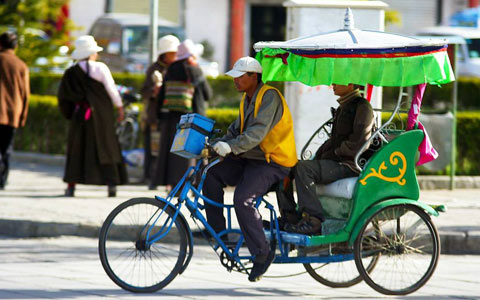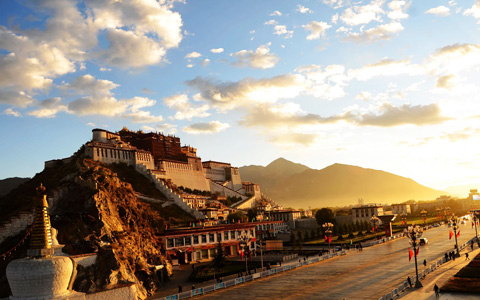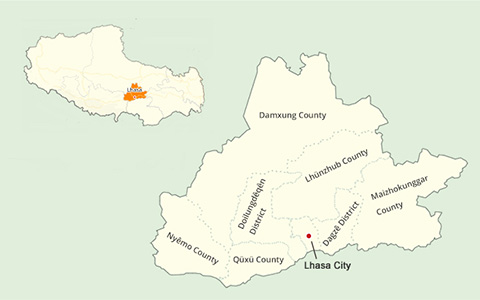Lhasa River: the closest enchanting river around Lhasa
Lhasa River, also called Kyi Chu River in the Tibetan language, which means “Happy River”. It is one of the five great tributaries of the Yarlung Zangbo River. It originates from the Mt. Nyainqentanglha by the side of sacred Lake Namtso, passes through Lhasa, and flows to the Yarlung Zangbo River. Lhasa River is the Mother River of the Tibetans. The river with high altitude goes through sacred Qinghai-Tibet Plateau and gives birth to the great and rich Tibetan culture. The Lhasa River Basin serves as the center of politics, economy, culture, transportation, and religion of the whole of Tibet.
 Location and Source of Lhasa River
Location and Source of Lhasa River
 Importance of Lhasa River to Tibetans and Lhasa City
Importance of Lhasa River to Tibetans and Lhasa City
Location and Source of Lhasa River
The Lhasa River is located in the Tibet Autonomous Region and is known as Kyi Chu River. Lhasa River originates from the middle part of the Nyanchen Thanglha Mountain's north face. It is one of the main tributaries of the Yarlung Tsangpo. Lhasa River flows through Meldro Gungkar County, Dagze County, and Lhasa City and eventually merges into Yarlung Tsangpo River. The Lhasa River is 568 kilometers long and drains an area of about 32,471 square kilometers, around 13.5 percent of Yarlung Tsangpo River’s drainage area.
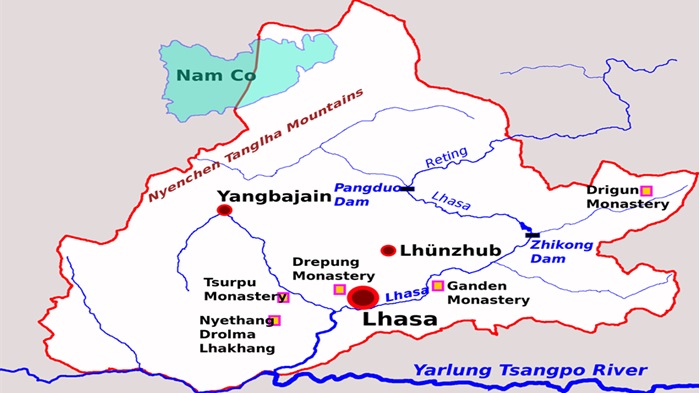 Location of Lhasa River and scenic spots around
Location of Lhasa River and scenic spots around
Importance of Lhasa River to Tibetans and Lhasa City
For thousands of years, the Lhasa River plays an essential role in Tibetan people and also the development of Lhasa city. In 633 AD, Songtsen Gampo moved the capital to Lhasa River Valley, which gradually developed into the political, economic and cultural center of Tibet. With an area of 16,000 square kilometers (6,178 square miles), it supports a population of around 600,000. It is known as one of the Three Largest Granaries (the other two are Nian-Chu River Valley and Yarlung Tsangbo River Valley) in Tibet. Even nowadays, Lhasa is also the best city in Tibet and enjoys a worldwide reputation.
Local people love Lhasa River very much. At weekends or holidays, people like to go camping or fishing on the Lhasa River banks to enjoy their leisure time. Meanwhile, they also like sitting here, drinking a cup of their Tibetan traditional butter tea, eating delicious food brought from home, enjoying the warm sunshine and leisure time. What is really an excellent time! If you have a Tibet tour, just go for the Lhasa River to appreciate its charm. What’s more, there are some other attractions along the river, such as Caiba Temple, Gongtang Temple and so on, which deserve a visit. On sunny days, you can also see the beautiful reflection of the splendid Potala Palace on the southern bank of the Lhasa River. Some photographers and fans wait here for this wonderful landscape.
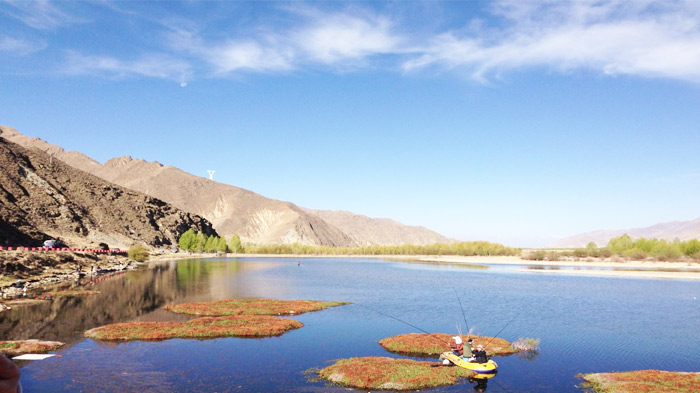 Local Tibetans do some fishing in the Lhasa River
Local Tibetans do some fishing in the Lhasa River
As a tributary of the Yarlung Tsangpo, Lhasa River is also a place for Tibetan to have bathed and wash their clothes in the seventh month of the Tibetan lunar calendar. During this Bathing Festival from Garmagun in the east to Sahu in the south and Rainbow Spring at the foot of the Sera Monastery, people are enjoying their bathing and washing. A legend says during the festival the Lhasa River water is as good as the holy water. If you like, you can join the local people to have a bath in this holy water.
Best Time to Visit Lhasa River
Every destination has its own tourism season. Of course, it also includes visiting the Lhasa River. We also have our tourism season which is from April to October. During these periods, because the weather is not so cold, lots of tourists are coming here to enjoy their holidays and try to relax themselves from the busy world. In summer, you can see more beautiful scenic spots along the river, the pure waters ripple slightly under the azure blue sky, and reflecting the wiping clouds that rush past. You can spend a night here because the weather will be so clear and you can get very good views and pictures, especially during sunrise. Watching the sunrise on the banks of the Lhasa River is also a good choice.
Best Places to Enjoy Lhasa River
As the Mother River of Lhasa, Lhasa River is a must-see place for natives and international travelers. For tourists visiting Lhasa for the first time, you must want to know where the best places are to enjoy Lhasa River. Here are some useful tips given by our experienced travel expert.
For most tourists, they will give preference to traveling Tibet by train. Because the Qinghai-Tibet Railway will pass through many scenic spots, which offers a good way for travelers to enjoy the beautiful scenery along the Qinghai-Tibet Plateau. Of course, it is also the Lhasa River. When the train enters Tibet, you can see the winding Lhasa River lying quietly from the train. Besides, you can also appreciate the beautiful Lhasa River when trekking from Ganden to Samye Monastery. It would be a pleasant trekking journey. During your trekking, you will encounter the winding Lhasa River, splendid and magnificent Ganden Monastery, high snow-covered mountains and so on. When you rest on the mountain, please don't forget to enjoy the beautiful Lhasa River in the distance.
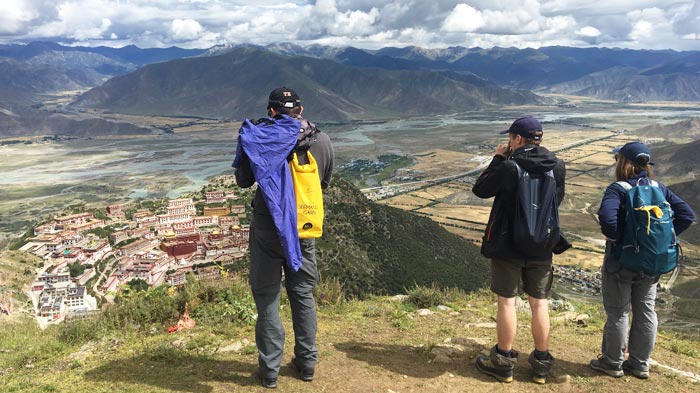 Trekking from Ganden to Samye Monastery, you will encounter the winding Lhasa River.
Trekking from Ganden to Samye Monastery, you will encounter the winding Lhasa River.
Besides, taking a helicopter to appreciate the panorama of Lhasa River is also a good option. Recently, a new way of visiting in Lhasa was added. Travelers can take a helicopter to have a bird's-eye view of Lhasa River from top of the sky. It will be a memorable experience for you to have an overhead view of Lhasa River, even the Lhasa city. If you need something fresh and exciting in your life, just have a try. Nevertheless, we highly recommend you to explore the Lhasa River by bicycle. Because you can not only see the beauty of the river, you can also experience local people have a Linka (Tibetan Picnic) under the shadow of a tree by the river and enjoy a peaceful moment in this holy place.

I am a tour guide in Tibet an was Born in Kham Tibet, I am the father of 2 little girls, bachelor's degree. I have more than 7-years experience of being a tour guide in Tibet. I am a warm, friendly, knowledgeable and attractive guy.
Related Articles & Posts
Most Popular Tibet Tour Packages
-
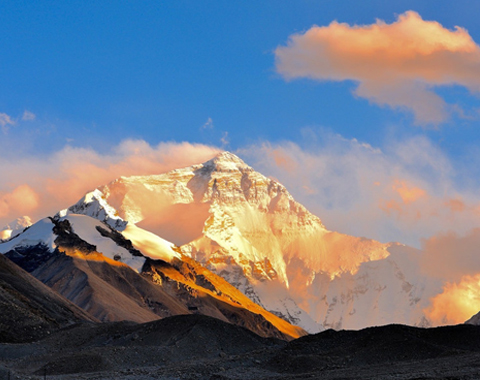
Lhasa - Gyantse - Shigatse - Everest Base Camp - Shigatse - Lhasa
USD939
View Details -
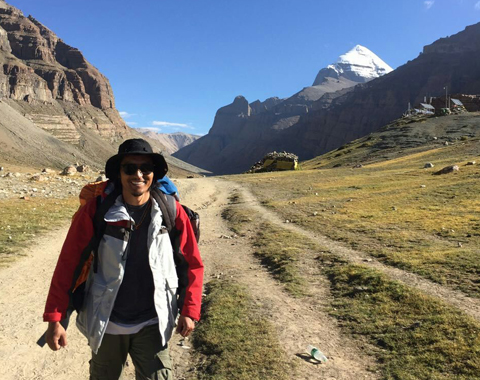
Lhasa - Gyantse - Shigatse - E.B.C - Saga - Kailash Trek - Darchen - Lake Manasarovar - Saga - Gyirong - Tingri - Lhasa
USD2059
View Details -
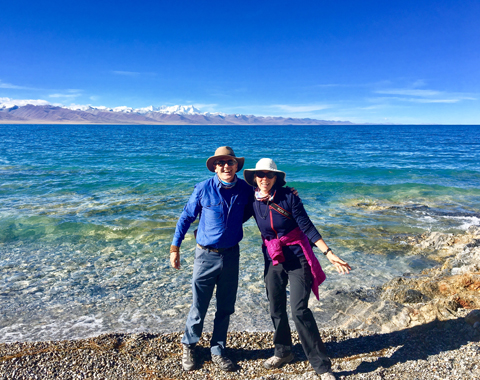
10 Days Lhasa to Everest Base Camp and Namtso Lake Small Group Tour
Lhasa - Gyantse - Shigatse - EBC - Shigatse - Lhasa - Namtso Lake - Damxung - Lhasa
USD1289
View Details -
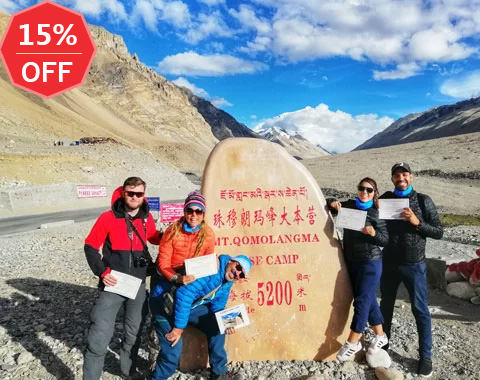
8 Days Driving Across Himalaya Overland Adventure from Kathmandu to Lhasa
Kathmandu - Gyirong - Everest Base Camp - Tingri - Shigatse - Gyantse - Lhasa
USD1069
View Details -
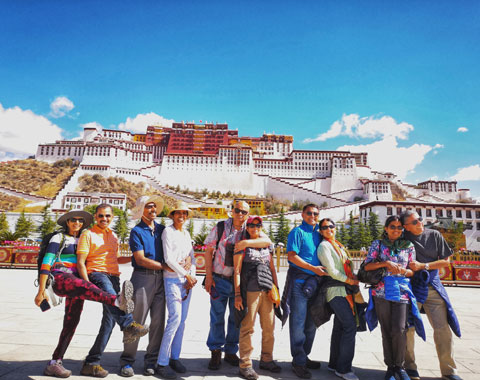
4 Days Lhasa Impression Small Group Tour: Explore the Heart of Tibet and Mingle with the Locals
Lhasa
USD509
View Details -

Lhasa - Gyantse - Shigatse - Everest Base Camp - Gyirong - Kathmandu
USD979
View Details -

Lhasa - Gyantse - Shigatse- Lhasa
USD799
View Details -
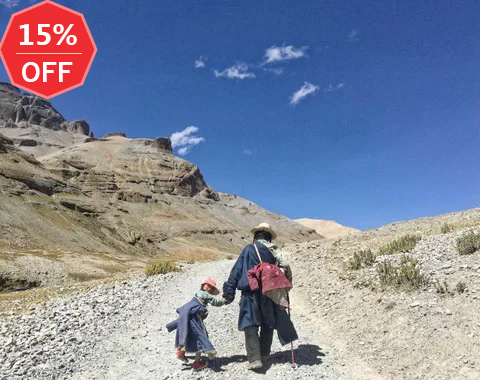
13 Day Lhasa, Mt. Everest, Mt. Kailash, Lake Manasarovar and Kathmandu Adventure Tour
Lhasa - Gyantse - Shigatse - EBC - Saga - Darchen - Kailash Trek - Darchen - Saga - Gyirong - Kathmandu
USD2059
View Details
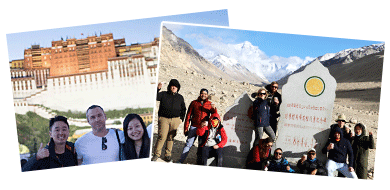

.jpg)



